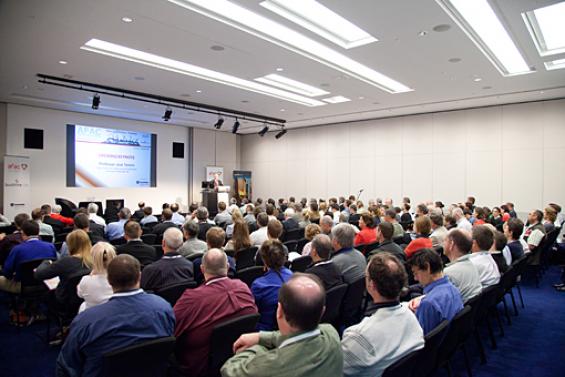Pages 297-306 Warning Fatigue what is it and why does it matter from 2011 Science Day Proceedings
Science Day

Science Day was the third day of the 2011 Bushfire CRC and AFAC annual conference in Sydney.
Proceedings from this day are published below.
News from the Event
Other Resources
Research Stream Presentations
| CRC Author | Author | Download |
|---|---|---|
| Balancing competing values in natural resource management | ||
| Jose Torero | Ignition of Solid Fuels and the Modelling of Forest Fires | |
| Mike Fromm | The Incredible Impact of Pyrocumulonimbus Storms From the Ground to the Stratosphere |
| CRC Author | Author | Download |
|---|---|---|
| Sarah HarrisMusa Kilinc | Establishing a link between the power of fire and community loss: the first step towards developing a bushfire severity scale | |
| Assessing Potential House Losses using PHOENIX RapidFire | ||
| Atypical bushfire spread driven by the interaction of terrain and extreme fire weather | ||
| Hakilo SabitAdnan Al-Anbuky | Distributed weather data stream mining for bushfire hazard prediction: wireless sensor network application | |
| Nic GellieKelsy GibosBrian PotterTony Bannister | Extreme Fire Processes on Black Saturday, 7th February 2009 | |
| Paul Fox-Hughes | Progress in understanding springtime fire weather in Tasmania | |
| Rethinking Fire from the Ground Up | ||
| Brian Potter | Something in the Air: Looking at the Black Saturday fires from an atmospheric energy perspective |
| CRC Author | Author | Download |
|---|---|---|
| Matthew Thomas Madeline Sprajcer | Designing valid and relevant training and testing scenarios for industry | |
| Rachel Bessell | Developing an Operational Grassland Curing System | |
| Essential aspects of effective simulation-based training for incident management personnel | ||
| Kevin NetoSarah JefferiesWarren PayneNeil Brooksbank | Frequency, intensity, speed and duration of tasks performed by australian rural firefighters during bushfire suppression | |
| Sarah JefferiesRod SnowAaron PetersenJack Harvey | Prescribed fluid consumption and its effects on the physiology and work behaviour of Australian bushfire fighters. | |
| Greg Roach | Sustained operations mode: a novel strategy for managing fatigue during extended firefighting operations | |
| The changing nature of emergency management coordination | ||
| Hakilo SabitAdnan Al-Anbuky | μScale Forest Fire Weather Index: A Wireless Sensor Network Architecture for Complementing the existing FWI System |


